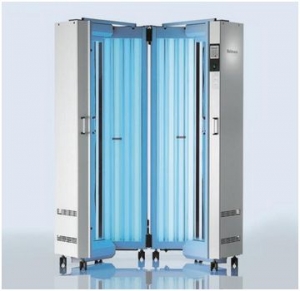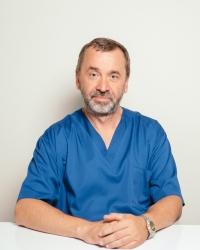Since ancient times, it is known that with some skin diseases there is an improvement in the summer and recrudenscence in the cold season. The oldest schools of medicine knew about the healing power of sunlight. Healers of Ancient Egypt and Assyria, Ancient Greece and Rome used sunbathing in their practices, the healing effects of the sun are repeatedly mentioned in the treatises of Hippocrates. In our time, scientists have studied that the reason for such a beneficial effect of the sun is mainly the effect of ultraviolet radiation. Ultraviolet rays are a component of the spectrum of solar radiation reaching the surface of the earth next to visible light and infrared rays. The proportion of ultraviolet rays in the solar spectrum is about 10%. The spectrum of UV rays is divided into three ranges according to the wavelength, which differ in their effect on the skin: • long-wave ultraviolet rays (UVA) - 320-400 nm (tanning effect is achieved, the intensity is low); • medium-wave ultraviolet rays (UVB) - 280-320 nm; (The intensity is the most, it is possible to get burns); • short-wave ultraviolet rays (UVC) - 100-280 nm (the most dangerous spectrum - death is possible). When passing through the atmosphere, all UVC rays and most of the UVB rays are absorbed and only all UVA and a small part of UVB radiation reach the surface. Numerous studies, experiments, and the use of radiation source of different spectra have led to the conclusion that it is precisely the mid-range (UVB) rays that have the highest efficiency for individual skin diseases, and of these, 311 nm waves. However, the proper use of such rays does not cause a large number of side effects. In terms of safety and efficacy, UVB 311 nm is unrivaled. The efficiency coefficient reaches 0.8 for individual pathologies. This means that in 8 out of 10 patients, a significant improvement is achieved after treatment with UVB 311 nm waves. Phototherapy UVB 311 nm has an immunocorrective effect, anti-inflammatory and anti-edematous effect, normalizes the balance of inflammatory and anti-inflammatory factors in the affected skin. inhibits excessive cell division, a pronounced antiallergic effect and affects the metabolism of vitamin D. It is used for carrying out a photocabin of WALDMANN company (Germany) with TL-1 lamps, generating radiation in the wavelength range 310-315 nm with a maximum emission at a wavelength of 311 nm. The procedure is carried out 3 times a week. The duration is from a few seconds to several minutes, which allows you to receive full treatment for patients who lead an active lifestyle. The course of procedures is determined individually. Indications for phototherapy • psoriasis; • vitiligo; • atopic dermatitis; • lichen planus; • neurodermatitis; • eczema; • mycosis fungoidea Contraindications for phototherapy • melanoma or skin cancer; • skin diseases with a risk of developing neoplasms (xeroderma pigmentosa, Bloom syndrome, dysplastic nevus syndrome); • diseases, the course of which worsens under the influence of ultraviolet radiation (lupus erythematosus, autoimmune thyroiditis); • tuberculosis. Side effect of phototherapy Since treatment takes place without taking photosensitizers, side effects are minimal and are associated only with the action of ultraviolet radiation. Numerous domestic and foreign studies confirm the fact that the development of skin neoplasms does not occur after phototherapy. The use of UVB 311 nm is the "gold" standard in the non-drug treatment of chronic dermatoses. This is the shortest, safest way to achieve clinical remission and improve the quality of life of our patients.
Number of views: 12631

















